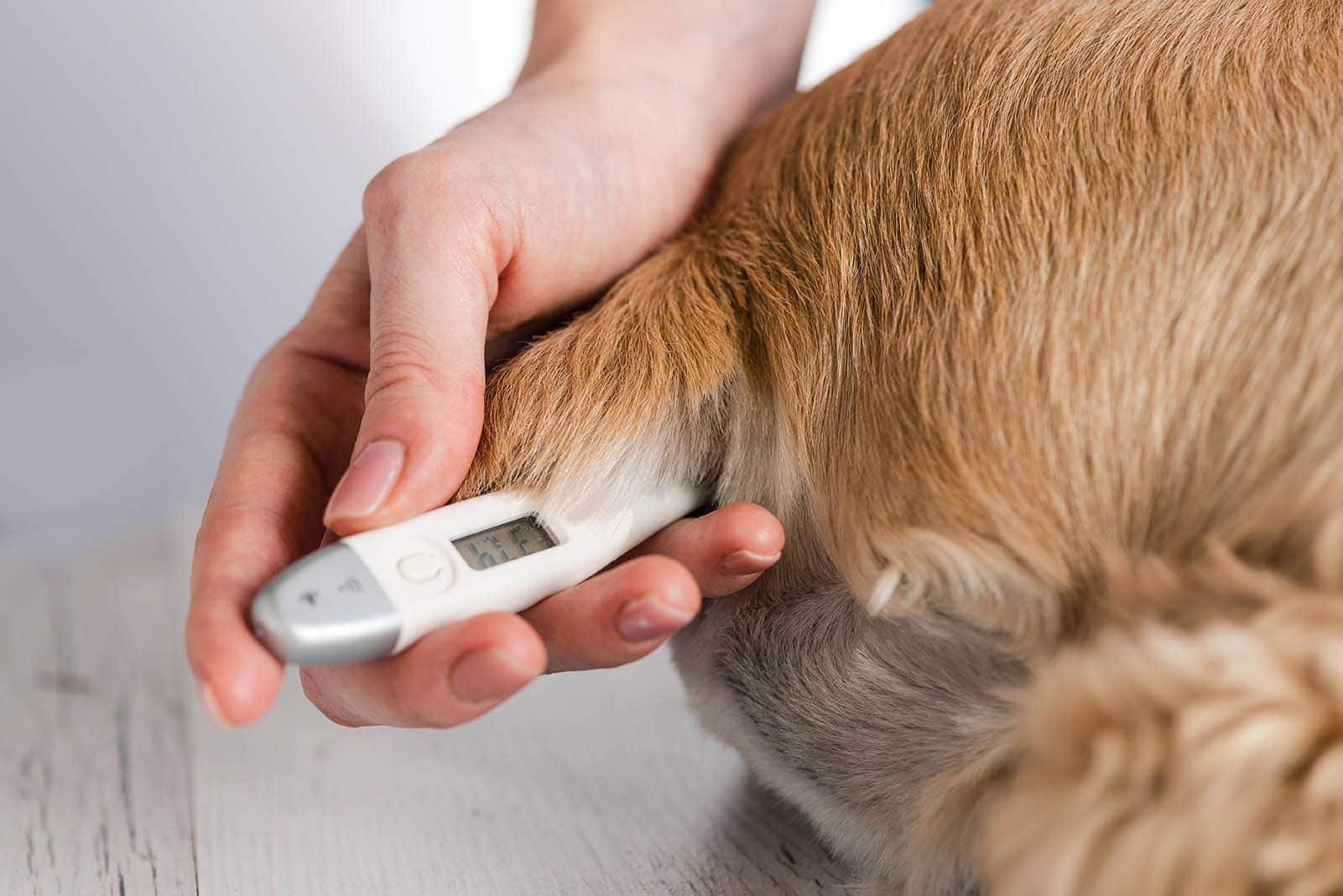How to Take a Dog’s Temperature: Vet Approved Steps
By Ed Malaker
Updated on

If you are a dog owner, you should know how to take your furry friend’s temperature in case there’s an emergency. Monitoring their temperature can help you detect signs of illness early, potentially saving your dog’s life. If you aren’t sure how to use a thermometer for dogs, keep reading as we provide a step-by-step guide and several tips and tricks to help you take your dog’s temperature at home.
Before You Begin
Before you begin, we recommend gathering a few things together.
- Digital Rectal Thermometer: You will need a digital rectal thermometer to take your dog’s temperature, and ensure that the thermometer that you have is made specifically for pets.
- Lubricant: You’ll need a lubricant, such as petroleum jelly or water-based lubricant, to insert the thermometer into your dog’s rectum.
- Towels: Have a few towels to help keep your dog calm and comfortable.
- Treats: You must treat your dog after taking their temperature to help reinforce good behavior and make the experience positive.
- Assistant: If possible, find someone who can help you hold your dog still during the process.
 The 10 Steps to Taking Your Dogs Temperature
The 10 Steps to Taking Your Dogs Temperature
1. Choose a Quiet, Comfortable Location
Choose a quiet and comfortable location in your home to take your pet’s temperature. We recommend a bathroom or laundry room because these are usually out of the way and easy to clean if your dog has an accident.

2. Prepare the Thermometer
Apply a small amount of lubricant and evenly distribute it over the thermometer’s tip. Turn the thermometer on.
3. Position Your Dog
Have your dog stand or lie down on their side. If that’s going to be a problem, ask an assistant to help you hold them still.

4. Lift Your Dog’s Tail
Using one hand, gently lift your dog’s tail to expose their anus. Use a gentle touch and avoid causing any discomfort.
5. Insert the Thermometer
Using your other hand, slowly insert the thermometer into your dog’s rectum, about 1 inch deep, and hold it securely so it doesn’t fall out. In the case of larger breeds, you might need to insert the probe 2 or 3 inches deep.

6. Wait for the Reading
Wait for the thermometer to beep or indicate that it has finished taking the temperature. Depending on the brand, it can take a few seconds to a full minute to be ready.
7. Remove the Thermometer
Gently remove the thermometer from your dog’s rectum while holding it securely so it doesn’t fall out and potentially harm your dog.

8. Record the Temperature
Write down the temperature and the time that you took it, so you can keep track of any changes over time.
9. Reward Your Dog
Once you get your pet’s temperature, give them a few treats to reward them for being a good sport.

10. Clean the Thermometer’s Probe
Use a cotton ball and rubbing alcohol to clean the thermometer’s probe after every use.
Expert Tips and Tricks
- Only use a digital rectal thermometer for pets. Glass thermometers can potentially harm your pet.
- Stay calm, as dogs can sense when you are nervous and may also become tense.
- Practice taking multiple readings at different times on different days to get familiar with your pet’s normal temperature range. This helps get your dog used to this procedure and will help you detect issues when your dog looks sick, especially if you are worried that the readings aren’t correct.
- If your dog’s temperature is not between 99.5 and 102.5°F or if your dog is showing other signs of illness, like lethargy, vomiting, or diarrhea, it’s likely time to call a vet to have your pet looked over.
Conclusion
Taking your dog’s temperature might seem like a big job at first, and it can take a few tries to be successful, but with the right preparation and technique, it can be a simple and valuable way to monitor your dog’s health. Remember to use a rectal thermometer designed for pets, be gentle and calm, and reward your dog for their cooperation. Call your vet if you notice any signs of illness or if your pet’s temperature is below or above normal.
Featured Image Credit: O_Lypa, Shutterstock


 The 10 Steps to Taking Your Dogs Temperature
The 10 Steps to Taking Your Dogs Temperature









